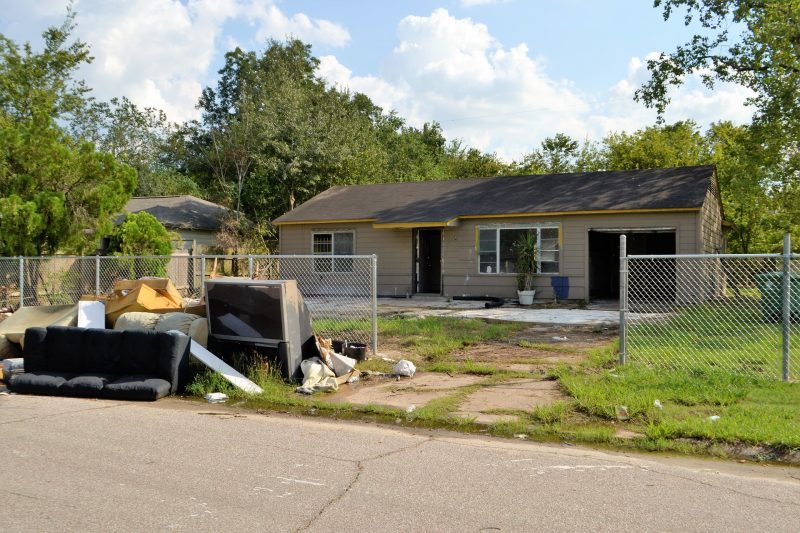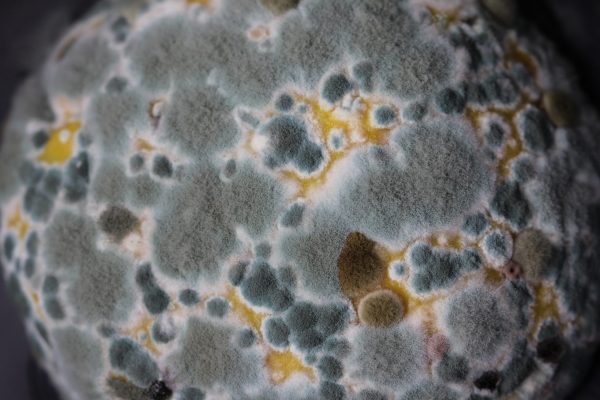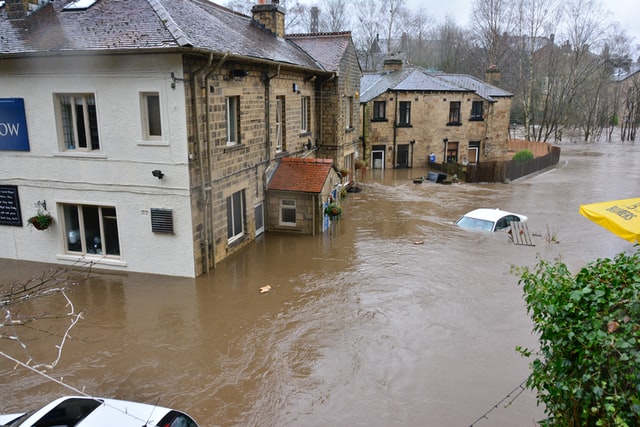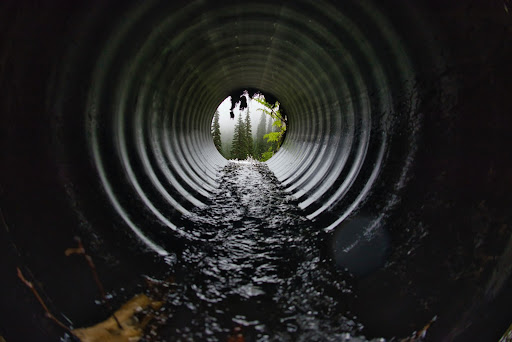Month: December 2021

How Water Can Damage Your Home
Water may not initially seem like a big threat. But the truth is that water can cause more damage to your home than any other source. Water is what we need most to survive, but it can destroy our homes if not taken care of quickly and properly. Water damage is more than just wet books or stains on walls. It can be hazardous to your home and your health. Here is how water can damage your home in ways you might not have considered.
Structural Damage
Water is particularly harmful to wood, especially the longer the wood is submerged. As wood absorbs water, it becomes soft and easily broken apart. If you have water damage, you could face serious structural issues in any wooden supports found in the area. Even if the wood is dried out, the damages can continue to linger beneath the surface.
Water-logged wood is also a prime target for termites and other pests. Bugs eating away at the wood will only weaken the structure more. It’s always a good idea to have the structural integrity of your home inspected after discovering a leak or flood. You may need to have parts replaced or bugs exterminated to keep your home safe and sound.
Electrical Hazards
Water and electricity don’t mix. Usually, great care is taken to ensure that pipes and electrical cords are run apart from each other. However, leaks can still drip down onto wires and floods can reach up to electrical outlets. If there’s been a leak or flood in your home, any use of an electrical appliance could result in injury. Always have your home’s electrical system inspected and repaired to avoid any unwanted shocks or power surges.
Mold
As possibly the most dangerous side effect of water, mold can cause serious health issues for you and your family. Mold thrives in wet environments, and some types survive well in either cold or hot areas. When there’s water damage in your home, mold will likely follow, especially if the water isn’t extracted immediately.
Mold is usually easily identifiable. Most molds carry a musty scent and have visible fungus growths. If you continue to smell mustiness after an area has been restored, it’s a good idea to get your home inspected for mold. As much damage as water can leave behind, mold is even more dangerous to let sit around your home.
Even though water is usually harmless in most cases, when it leaks or floods into your home, it can cause serious damage. Water damages your home’s structure and electrics and can invite unwelcome guests such as mold and termites into your home. So if you’ve experienced water damage in your house, call Insight Restoration today at 208-427-2534. Our team of certified technicians is standing by 24/7 to respond immediately to any water crisis. We’ll get the water extracted and provide an inspection to assess any damage caused so we can get your home back to perfect working order.

Know Your Mold
Mold is one of the most frustrating and concerning finds in your house. Finding mold usually means there’s another issue, such as a leaky pipe or improper ventilation. Mold can be dangerous if left untreated. It can also lead to health problems for you and your family down the road. Proper mold identification helps you better understand the threat your home faces and can help you find a qualified mold removal technician to deal with the problem. Here are some of the common house molds you may find and how to identify them.
Acremonium
Acremonium is a highly toxic mold that usually turns into a pink, grey, orange, or white powder. It thrives in moist areas such as drain pans, humidifiers, and even window sealants. Acremonium is commonly found alongside black mold and other toxic molds, so be on the lookout for other hazards.
Alternaria
Alternaria is an allergenic mold that causes coughing, runny noses, and watery eyes. It’s a common bathroom mold in bathtubs or showers and usually indicates water damage. It spreads quickly and has a velvety texture. Alternaria also sprouts dark green or sometimes brown hairs on its surface.
Aspergillus
Like Alternaria, Aspergillus is a common allergenic mold. However, it carries more of a toxic threat than Alternaria. There are over 185 variants of Aspergillus, but you can usually identify it by the spores, which are long and shaped like flasks.
Aureobasidium
Another allergy-causing mold, aureobasidium starts as either pink or brown but turns darker over time. It’s often found on wooden surfaces and can lead to infection if it comes in direct contact with skin.
Chaetomium
Chaetomium has a cotton-like texture and thrives in areas with severe water damage. This mold has a noticeable musty odor and turns from white or grey to black as it ages. Chaetomium can also lead to infection if touched.
Cladosporium
A suede-textured mold, cladosporium often causes severe allergic reactions such as respiratory issues and is most often discovered in home fabrics and carpets. It is typically olive green or brown.
Fusarium
Fusarium grows on food and can spread quickly. Pink, white, or red in color, fusarium can cause severe damage to the nervous system if ingested.
Mucor
Mucor grows in thick, white patches. It often grows in air conditioning units or damp carpeted areas. Mucor has the threat of fungal infection if not dealt with swiftly.
Penicillium
Like alternaria, penicillium has a velvety texture, but it usually appears in a blue-green color. The spores of penicillium can quickly travel through the air in your home and cause allergy or asthma-like reactions. You can commonly find it in wallpaper and mattresses.
Stachybotrys
Also known as black mold, stachybotrys is a slimy, dark green or black mold with highly toxic qualities. It grows in damp and humid areas.
Trichoderma
Trichoderma is a white mold that commonly has green patches with wooly textures. It typically grows in areas with built-up condensation, like air conditioning filters or wallpapers.
Whenever you discover mold, it’s important not to disturb it or try to remove it without professional help. Call Insight Restoration at (208) 427-3042 to have a professional mold removal specialist identify and remove your home’s mold.

First Steps after a House Flood
Water can cause a lot of damage to your home if not taken care of quickly. Discovering flood damage in your home can cause chaos in your life, but taking care of it as soon as possible can save you time and money later on. Taking care of your house after a flood requires a few steps on your end before a restoration company gets there. Although it can be a lot to handle, taking the time to clean up after a flood is vital to keeping your home secure.
Water Extraction
Depending on the scale of the flood, extracting the water from the area is usually the first step. If there’s too much water in the room, any other kind of cleaning or restoration is nearly impossible to accomplish. Chances are, if your room floods, there’s already an issue with drainage, so it can take a while for the water to subside.
Most restoration companies offer water extraction as part of their flood clean-up packages. There are some tools you can purchase if you want to remove the water yourself. Installing a sump pump in your basement is also an excellent way to help remove water after a flood.
Flood Damage Identification
After the area is clear of water, the next thing you’ll want to do is go through and identify what was damaged in the flood. Most homeowner’s or renter’s insurance covers flood damage in their policies. In order to get reimbursement, you’ll need to know exactly what was damaged and how much it will cost to replace.
Take stock of valuables that were damaged in the flood. You’ll also want to have an inspection done to see if there was any structural damage to your home. Most insurance policies will cover the cost of repairs as long as the damage can be linked to the flood. Keep any receipts from water extraction or repairs as well.
Restoration Preparation
After you’ve made note of what’s been damaged, it’s time to get the area ready for restoration. Airing out the room, if possible, and running fans can help dry out excess water and prepare the space for repair. Keeping the room quarantined from the rest of the house will stop any damage from spreading to other areas.
Cleaning the room out can also help the restoration process. Move furniture and boxes to another area (or let them sit outside if it’s not raining). This is especially important if you have carpets. Carpets need to have the space to dry out properly. Giving your restoration company more room to work ensures the work goes quickly and effectively.
When your home floods, you need to act fast to prevent further damage. Removing water from the area and cleaning out the room can help restoration go smoothly. Insight Restoration’s certified technicians are ready to help you 24/7. If your home recently experienced flood damage, call us today at 208-427-3042. We’ll get your home back in perfect condition quickly and efficiently.

Why You Shouldn’t Leave a Sewer Backed Up
Dealing with a sewage backup is never pretty. But leaving a sewer backed up is even less pleasing. A backed-up sewer can lead to a whole slew of problems if left undrained. Although paying to drain a sewer or getting dirty draining it yourself isn’t ideal, it’s better than the alternative. Draining a backed-up sewer is not something that should be put off, and here are the main reasons why.
Disease
Sewage is unpleasant for a reason. All kinds of bacteria and viruses thrive in the environment sewage provides. Your backed-up sewer can host e. Coli, salmonella, and even hepatitis. In fact, according to The National Resources Defense Council, an average of two million illnesses are the result of sewage contamination.
A backed-up sewer doesn’t stay contained to your pipes. Without proper draining, sewage can leak back into your home, infecting your sinks and tubs with harmful bacteria. Leaving your sewer backed up puts you, your family, and your neighbors at risk of serious injury.
Additional Home Damage
Leaving a sewer backed up doesn’t just increase the risk of disease. Pipes need proper drainage to function, and without it, you could be facing costly home repairs. If your sewer is backed up, every time you turn on a faucet or flush a toilet, you run the risk of causing your pipes to crack or burst from the pressure. Also, without anywhere else to go, water that can’t drain through your pipes can spill back into your home, causing water damage.
Sewage problems can even affect your lawn, causing the grass to die and tree roots to become diseased. So, even though paying to drain your sewer, or spending the day doing it yourself, may seem costly, the cost of repairs for the additional damage a backed-up sewer can cause is almost always more. So be proactive and get your sewage drained before it causes more problems.
Sight and Smell
Waste trying to flow through a backed-up pipe needs somewhere to go. Unfortunately, that place is in your home or yard. Sewage can leak out of pipes in your home or under your lawn, leaving a thoroughly unpleasant sight and scent. And if the sewage is leaking into your yard, it’s not only you that has to be subject to the odor. Leaving your sewer backed up influences everyone that lives on your street. And if you have a homeowner’s association or similar group regulating your neighborhood, you could be looking at additional fines for your sewage problems.
If your home has a backed-up sewage problem, don’t hesitate to get it drained. Insight Restoration can remove the blockage from your sewer and put preventative measures in place to keep your sewer clog-free in the future. Give us a call at 208-427-2962 to discuss your sewage cleaning needs. Our certified technicians are available 24 hours a day, seven days a week, to take your call and help with your restoration.

